The Splendor Beauty of Dubrovnik – “The Jewel in the Adriatic Sea”
Dubrovnik is one of the world’s most magnificent walled cities, overlooking the calm blue Adriatic. Once the capital of the mighty sea-faring Republic of Ragusa (1358-1808), it's now Croatia’s most upmarket destination. Historically, this diminutive republic was sophisticated, refined and cultured. Today, the pedestrian-only Old Town – packed with aristocratic palazzi and elegant Baroque churches, contained within sturdy medieval fortifications – draws hundreds of thousands of visitors annually, including glamorous names such as Beyoncé, Roman Abramovich, Sir Roger Moore and Naomi Campbell. Beyond the walls, attractions include wine bars, classy seafood restaurants and five-star hotels.
And then there's the glorious rock-and-pebble coast, with beaches, scuba diving and sea kayaking. Some of the best beaches lie on Lapad peninsular, two miles (three kilometres) west of town; or you might try tiny Lokrum islet, with its botanical garden (you can get taxi-boats from the old town harbour); or the pine-scented Elaphiti islands (ferry from Gruž port).
The history of Dubrovnik
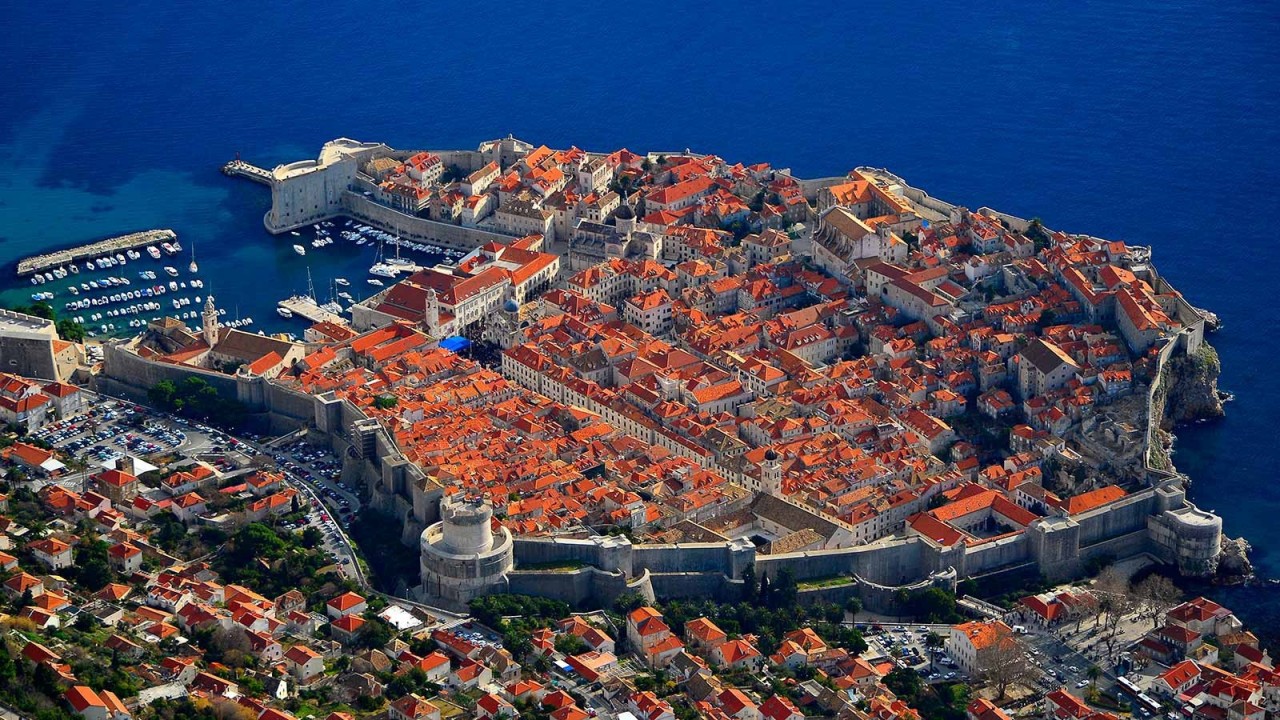 |
| Photo: Telegraph |
Dubrovnik’s history witnesses the changing fortune of a borderland Mediterranean city-state that for centuries lived in harmony with its surroundings. Originally called Ragusa, the city was founded in the 7th century as a refuge for coastal residents fleeing the advancing barbarians. From the outset, the city was protected by defensive walls. The borderland status of the town was to be a determining factor in its history. Part of the Mediterranean cultural constellation, yet intimately connected to the Balkans. Catholic yet surrounded by Islamic and Orthodox neighbours.
The new city-state used its status as a crossroads between cultures and civilisations. The city thrived through extensive trade with other maritime ports such as Genoa, Pisa and Venice. Its continental trade networks also extended its reach into the Balkans with the Ottoman Empire. At the beginning of the 13th century, Dubrovnik fell under the control of the most Serene Republic, staying under its control until 1358.
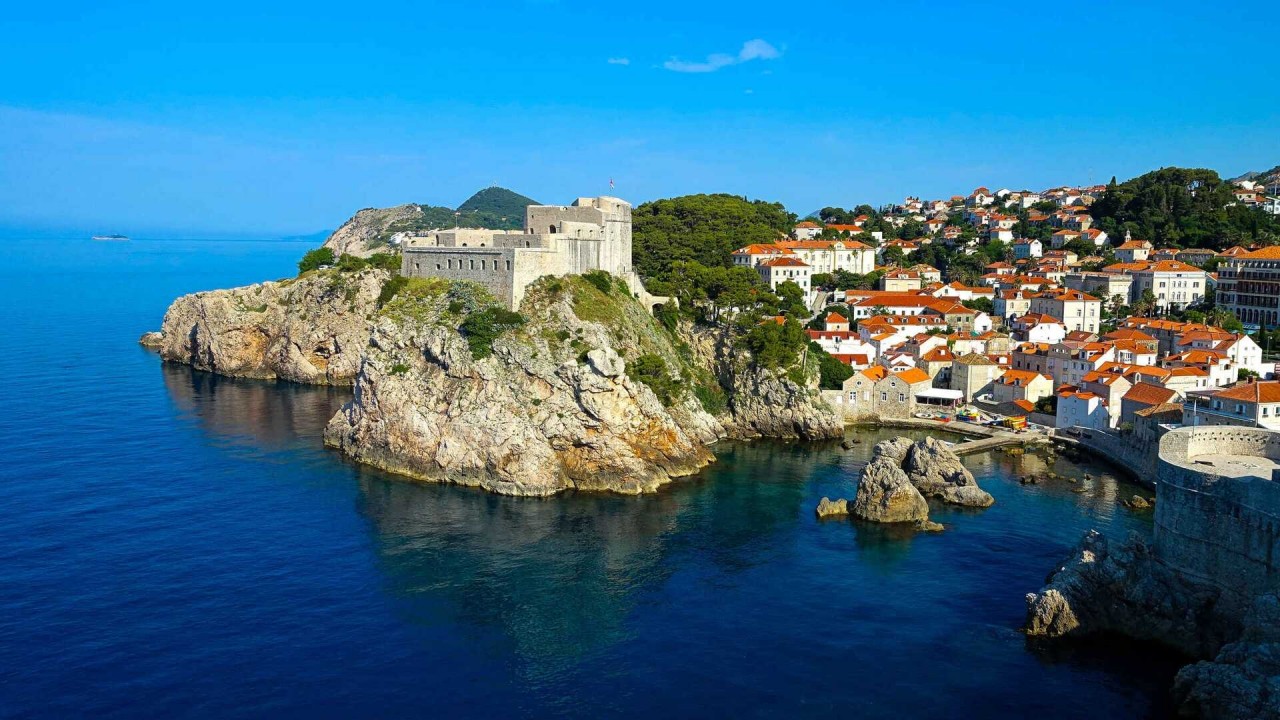 |
| Photo: Getyourguide |
Towards the end of the Middle Ages, Dubrovnik’s maritime influence meant that it was the chief competitor of the Venetian empire for the Adriatic waterways. Its European educated diplomats and its widespread commerce allowed it to expand its influence beyond the Adriatic. Machiavelli was a notable luminary so impressed by the city that he applied to work there. City authorities were not impressed and turned him down.
Catastrophic earthquake
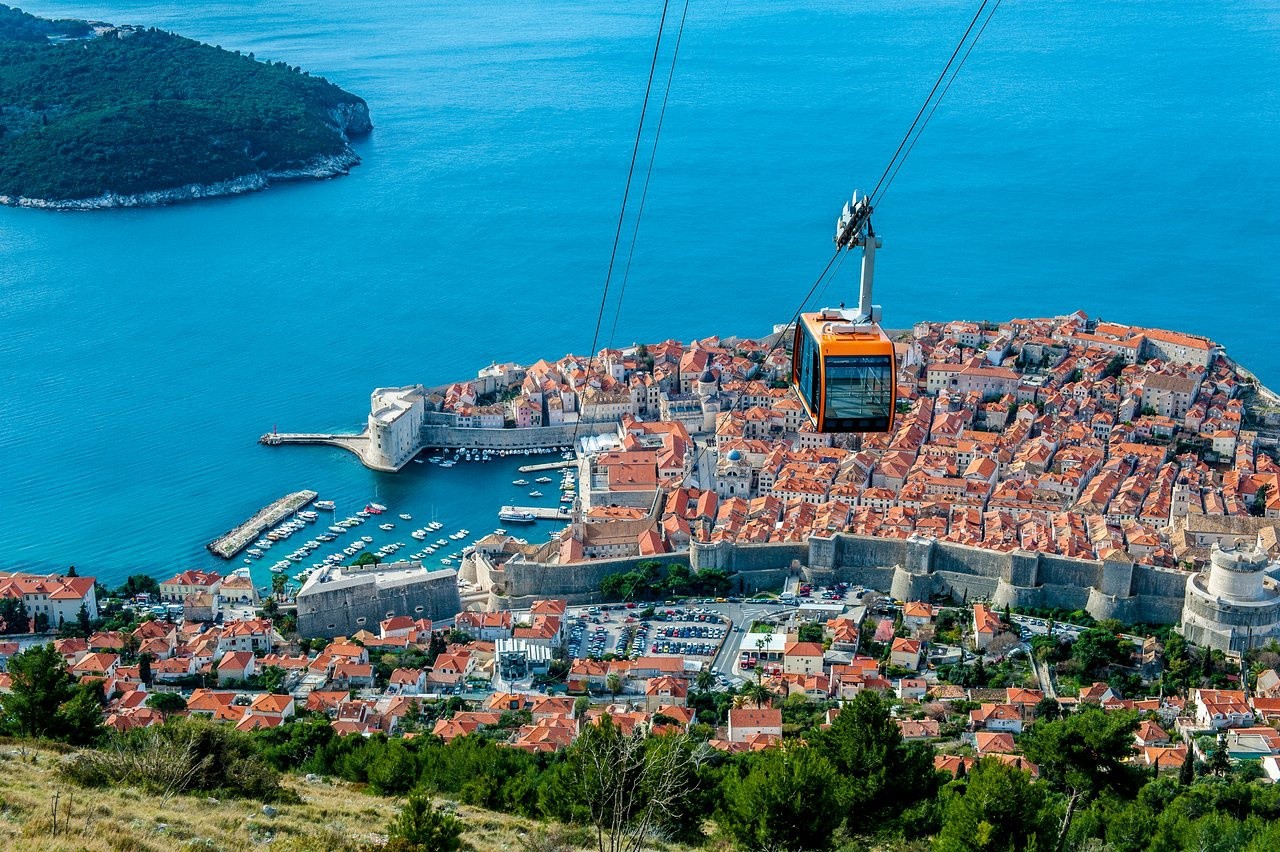 |
| Photo: TripAdvisor |
Dubrovnik’s ascent received a major blow in 1667 as a catastrophic earthquake destroyed a large amount of Renaissance art and architecture in the city. The Sponza and the Rector’s palace were the only buildings that survived the natural disaster. The city was reconstructed in the baroque style that has survived intact until today. Despite the reconstruction, the decline of the Mediterranean as a hub for trade meant that Dubrovnik, like other Mediterranean ports, began a steady decline. By the time Napoleon arrived at the gates in 1806, the Republic of St Blaise was a shadow of itself.
The Congress system and Napoleon’s campaign had extinguished the last vestiges of the Republic. In 1815, like much of the eastern Adriatic coast, Dubrovnik became part of the Habsburg Empire, where it would remain until 1918.
City Walls & Forts
No visit to Dubrovnik is complete without a walk around the spectacular city walls that encircle its historic core. They're among the finest in the world and are the city's defining feature. From the top, the view over the old town and the shimmering Adriatic is sublime. From the sea, the juxtaposition of pinkish-grey stone and azure waters is mesmerizing, while from above the tight maze of church steeples and terracotta roofs is the setting for a fairy tale – or, at the very least, some Game of Thrones episodes.
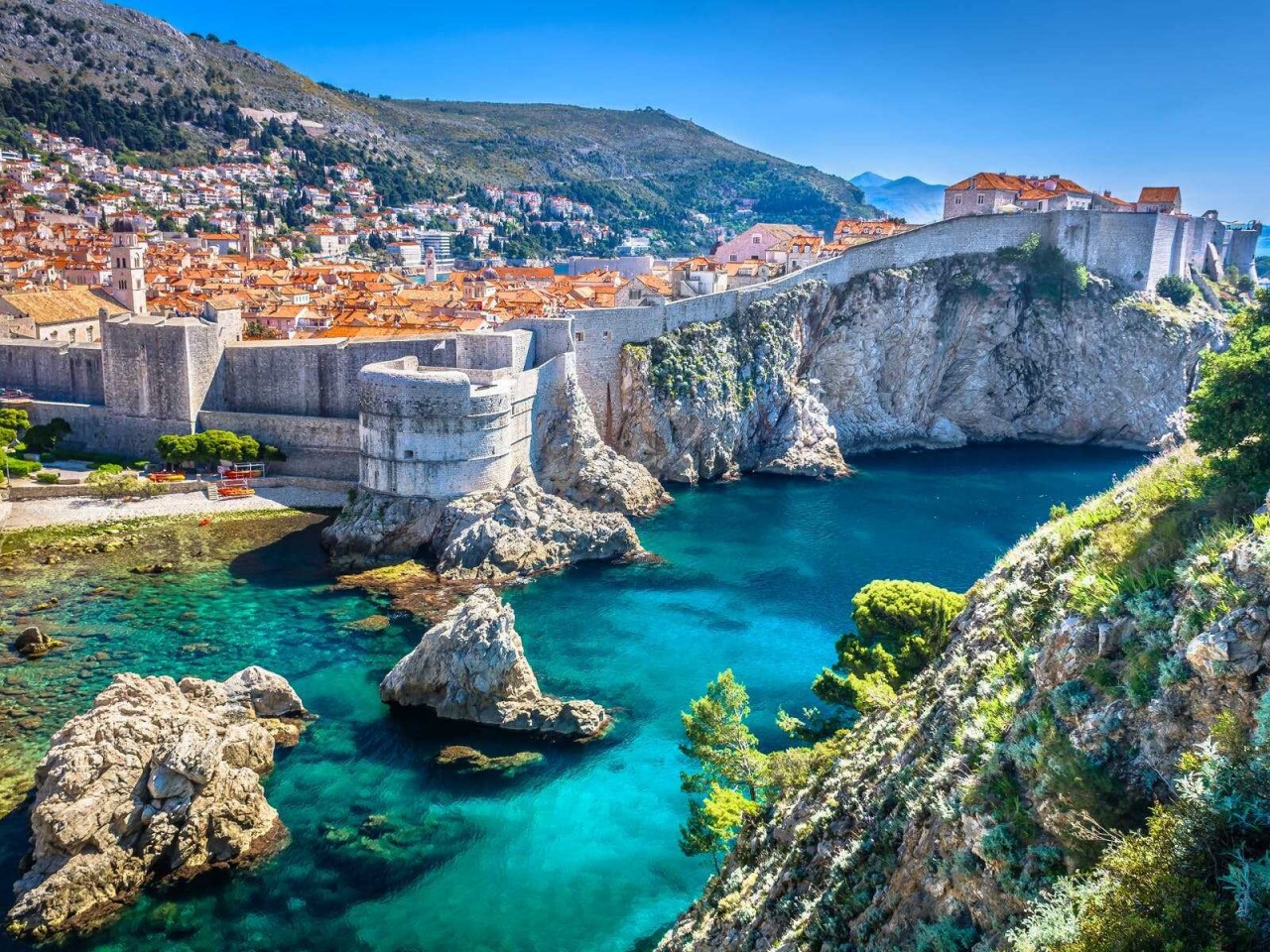 |
| Photo: Lonely Planet |
The first set of walls to enclose the city was built in the 9th century. In the middle of the 14th century the 1.5m-thick defences were fortified with 15 square forts. The threat of attacks from the Turks in the 15th century prompted the city to strengthen the existing forts and add new ones, so that the entire old town was contained within a stone barrier 2km long and up to 25m high. The walls are thicker on the land side – up to 6m – and range from 1.5m to 3m on the sea side.
Historically, the entrance to the city was via two elaborate gates: the Pile Gate to the west and the Ploče Gate to the east. Both have drawbridges that were raised at sunset when the doors were locked and the keys handed to the rector. A third entrance, the Buža Gate, was added to the northern wall at the top of Boškovićeva street in 1907.
Round Fort Minčeta protects the landward edge of the city from attack. Fort Bokar is the westernmost tower, built to protect Pile Gate. Fort Lawrence, a large, free-standing fortress, was built to guard the city's western approach from invasion by land and sea, with walls from 13ft to 39ft (4m to 12m) thick. The views back over the old town from here are wonderful.
There are ticketed entrances to the city walls near the Pile Gate, the Ploče Gate and the Maritime Museum. To reduce congestion, you're required to walk the walls in an anticlockwise direction. At busy times it can resemble a sweaty, slow-moving conga line. Don't let that put you off: the views over the old town and the Adriatic are worth any frustration resulting from a busy period.
One of the most charming aspects of the walk (although perhaps not for Dubrovnik's long-suffering residents) is the glimpses it gives into hidden gardens and courtyards in the residential fringes of the town.
Lokrum
Lush Lokrum is a beautiful, forested island full of holm oaks, black ash, pines and olive trees, only a 10-minute ferry ride from Dubrovnik's Old Harbour. It's a popular swimming spot, although the beaches are rocky. Boats leave roughly hourly in summer (half-hourly in July and August). The public boat ticket price includes the entrance fee, but if you arrive with another boat, you're required to pay 120KN at the information centre on the island.
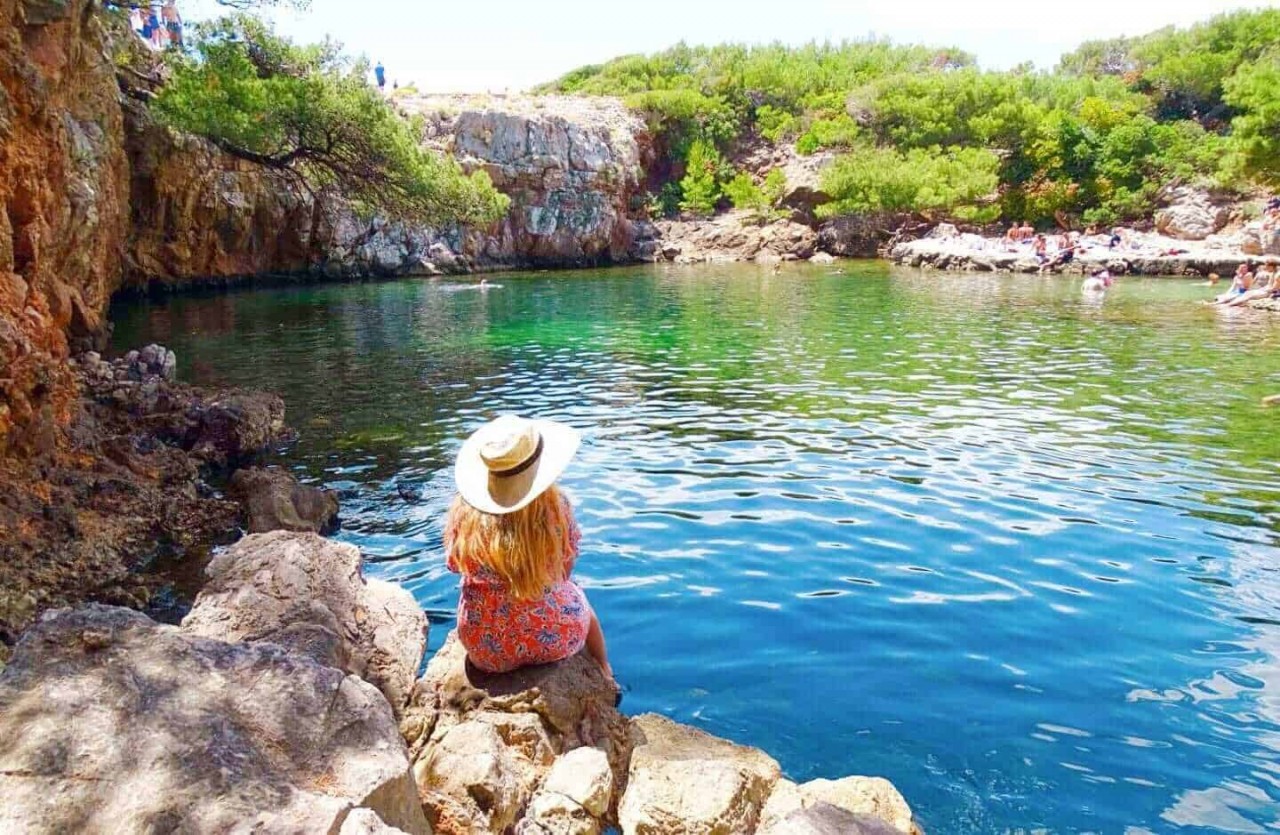 |
| Where Goes Rose? |
The island's main hub is its large medieval Benedictine monastery, which houses a restaurant and a display on the island's history and the TV show Game of Thrones, which was partly filmed on Lokrum. This is your chance to pose imperiously on a reproduction of the Iron Throne. The monastery has a pretty cloister garden and a significant botanical garden, featuring giant agaves and palms from South Africa and Brazil. Near the centre of the island is circular Fort Royal, commenced during the French occupation in the early 19th century but mainly used by the Austrians. Head up to the roof for views over the old town.
To reach the nudist beach, head left from the ferry and follow the signs marked FKK; the rocks at its far end are Dubrovnik's de facto gay beach. Another popular place for a swim is the small saltwater lake known as the Dead Sea.
Make sure you check what time the last boat to the mainland departs. Note that no one can stay overnight and smoking is not permitted anywhere on the island.
Franciscan Monastery & Museum
Within this monastery's solid stone walls are a gorgeous mid-14th-century cloister, a historic pharmacy and a small museum with a collection of relics and liturgical objects, including chalices, paintings and gold jewellery, and pharmacy items such as laboratory gear and medical books.
Before you head inside, stop to admire the remarkable pietà over the church door, sculpted by the local masters Petar and Leonard Andrijić in 1498. Unfortunately, the portal is all that remains of a richly decorated church that was destroyed in the 1667 earthquake. Its baroque replacement is adorned with ornate altars capped with large paintings.
Access the cloister and the museum via the small passage between the monastery church and St Saviour's church. The cloister is one of the most beautiful late-Romanesque structures in Dalmatia. Notice how each capital over the incredibly slim dual columns is topped by a different figure, portraying human heads, animals and floral arrangements. At the centre is a small square garden that’s shaded by orange and palm trees.
Cathedral of the Assumption
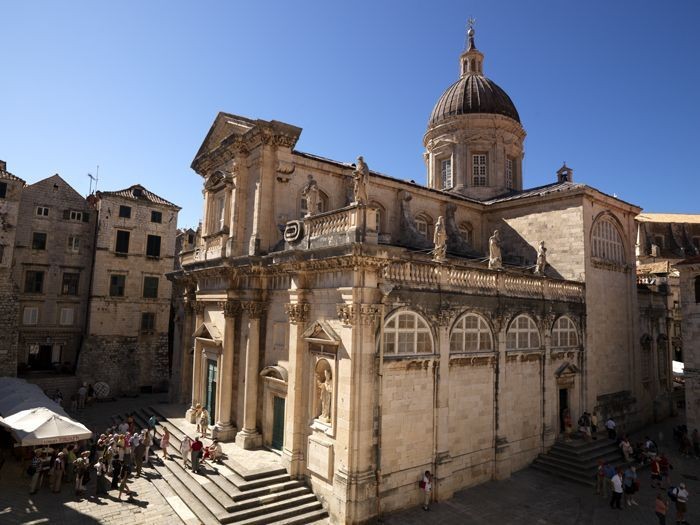 |
| Photo: Pinterest |
The Dubrovnik Cathedral of the Assumption of the Virgin Mary was built in 17th century replacing the older cathedral that was destroyed in the earthquake. The cathedral has a lovely interior, with numerous old religious paintings, one of them of the Assumption of the Virgin Mary that is attributed to Titian. The cathedral is free to visit so this is one of the must see sights in the Old town.
The cathedral is notable for its fine altars, especially the altar of St John of Nepomuk, made of violet marble. The most striking of its religious paintings is the polyptych of the Assumption of the Virgin, hanging behind the main altar, by 16th-century Venetian painter Titian.
 | Natural Mystery: The Unique Al Naslaa Rock Formation of Saudi Arabi The world has many mysterious places and things that science fails to find an answer, and one of them is Al Naslaa Rock Formation, placed ... |
 | Explore Top 7 Wonderful and Must-Visit Wildlife Hot-Spots in Southeast Asia From Komodo National Park in Indonesia to Ba Be National Park, these wonderful places have some of the world's most facisnating wildlife that will amaze ... |
 | Step Into The Wilderness: Visit The Mesmerizing “Garden of The Gods” Garden of the Gods, a mesmerizing public park with 300-million-year old sandstone rock formations, is a famous destination in the United States. |
Recommended
 Travel
Travel
Vietnam Through Australian Eyes: Land of Flavor, Warmth, and Timeless Charm
 Travel
Travel
Strategies for Sustainable Growth of Vietnam’s Tourism from International Markets
 Travel
Travel
Vietnam Strengthens Its Presence On The Global Tourism Map
 Multimedia
Multimedia
Phong Nha-Ke Bang National Park Named Top Adventure Travel Site
Popular article
 Travel
Travel
Vietnam Welcomes Record-High Number of International Visitors
 Travel
Travel
Luxury Train From Hanoi To Hai Phong To Be Launched In May
 Travel
Travel
Phong Nha Named Top Budget-Friendly Travel Destination for Spring 2025: Agoda
 Travel
Travel







